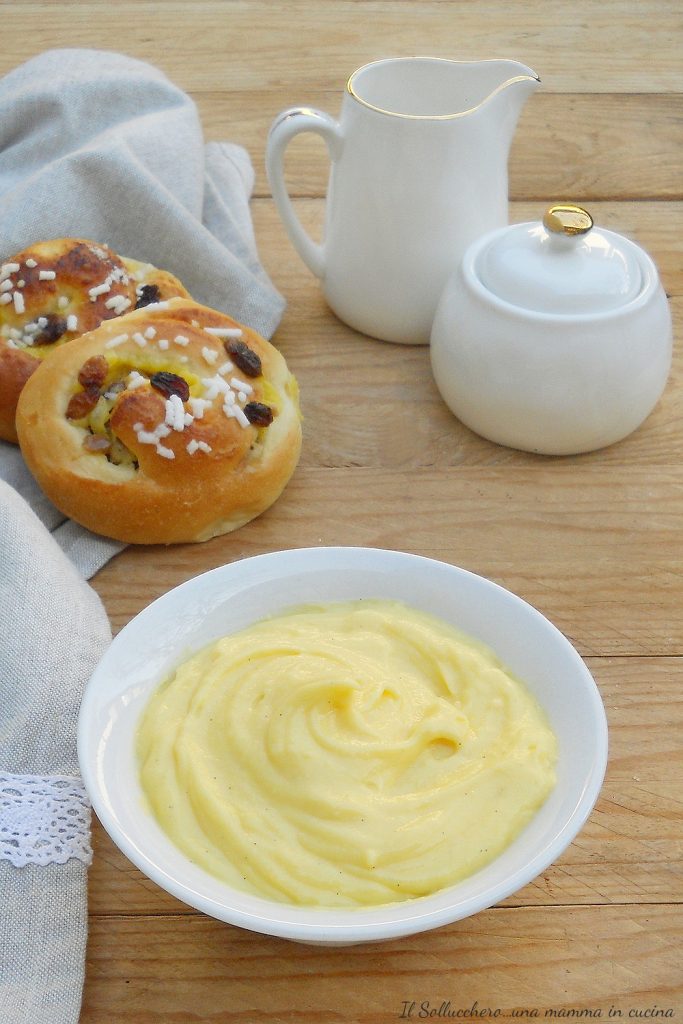
- Difficulty: Very Easy
- Cost: Economical
- Preparation time: 10 Minutes
- Portions: 6/8
- Cooking methods: Pressure Cooker
- Cuisine: Italian
- Seasonality: All seasons
- Energy 227.47 (Kcal)
- Carbohydrates 26.39 (g) of which sugars 22.33 (g)
- Proteins 4.88 (g)
- Fat 12.01 (g) of which saturated 3.49 (g)of which unsaturated 3.76 (g)
- Fibers 0.05 (g)
- Sodium 8.45 (mg)
Indicative values for a portion of 100 g processed in an automated way starting from the nutritional information available on the CREA* and FoodData Central** databases. It is not food and / or nutritional advice.
* CREATES Food and Nutrition Research Center: https://www.crea.gov.it/alimenti-e-nutrizione https://www.alimentinutrizione.it ** U.S. Department of Agriculture, Agricultural Research Service. FoodData Central, 2019. https://fdc.nal.usda.gov
Advice
Storage
If the custard has been cooled in the refrigerator or blast chiller, you can store it for 4 or 5 days without any problems. If you let it cool at room temperature, you can store it for a maximum of 2 days.
Can rice starch be replaced with corn starch?
Yes, it can be done. They are two starches that can be substituted, although their function is different.
Rice starch gives creaminess, while corn starch gives structure to the custard, making it more “pudding-like”
Why does the custard taste like egg?
The custard tastes like egg only when it is poorly cooked. If we let it boil, the yolk releases the sulfur (contained in the yolk itself), and the custard takes on a hard-boiled egg flavor. The custard is cooked at 180/181°F
Can I reduce the sugar in the custard?
Yes, but you will also need to reduce the yolks, which should have roughly the same weight. Sugar is an anticoagulant and allows the custard to thicken, making it velvety. So the more yolks we increase, the more sugar we need to increase. If we remove 50g of sugar, we need to remove 50g of yolks.
Can I replace starches with flour in the custard?
It’s better not to use flour in either microwave or classic custard because it gels at 201/204°F, a temperature very close to the boiling point that tends to bring out the hard-boiled egg flavor. That’s why, especially in pastry, flour is used less and less in creams.
*****************
For advice on making the recipes, contact me on FACEBOOK and follow me on INSTAGRAM so you don’t miss any advice!
Send me your photos, I will gladly publish them on my social networks.
Check out the “SPECIAL: Guide to the best microwave ovens of 2020”
This article contains sponsored content

